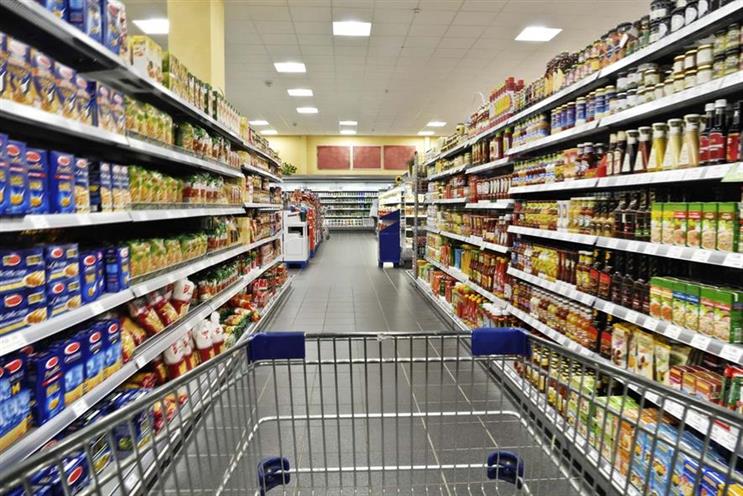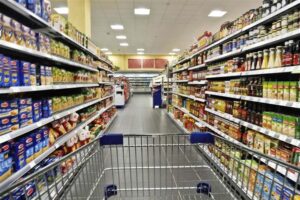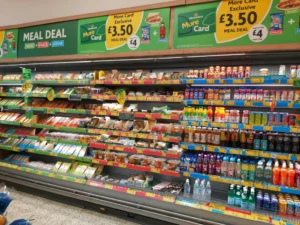How Yellow Stickers Work at UK Supermarkets (You Didn’t Know This)

Ever wandered into a UK supermarket and seen bright yellow stickers slapped on food items? They’re not random. They’re part of a smart discounting system that could save you serious money—if you know how to work it.
This guide breaks down how yellow stickers work, when to find them, which supermarkets offer the best deals, and how you can use them wisely.
What Are Yellow Stickers?
In most UK supermarkets, yellow stickers indicate reduced-to-clear items—usually perishable food nearing its “use by” or “best before” date.
These stickers highlight:
-
A markdown price
-
Sometimes the original price
-
A new barcode for checkout scanning
You might see a ready meal originally £4 now going for £1.25. Or a pack of fresh fish reduced by 70%. Discounts vary based on the time of day and how close the expiry date is.
Why Do Supermarkets Use Yellow Stickers?
There are three main reasons:
-
Reduce food waste – Supermarkets want to sell products before they expire.
-
Clear shelf space – Especially for fresh food that needs quick turnover.
-
Protect margins – It’s better to sell at a reduced price than throw products away.
It’s a win-win: supermarkets reduce waste, and you save money.
What Types of Products Get Yellow Stickers?
You’ll typically find reductions on:
-
Fresh meat, poultry, and fish
-
Dairy items (milk, cheese, yoghurts)
-
Baked goods (bread, pastries)
-
Ready meals and chilled convenience foods
-
Fresh fruit and vegetables
-
Sandwiches and on-the-go lunch items
You’ll rarely find reductions on long-life goods like pasta, tins, or cleaning supplies—unless they’re damaged or discontinued.
ALSO READ: The UK Supermarkets Best for Organic Food Ranked
When Do Supermarkets Start Marking Down Items?
Timing matters.
Each supermarket has its own schedule, but here’s a general guide:
| Supermarket | First Reductions | Final Markdowns (Deepest Discounts) |
|---|---|---|
| Tesco | ~9am | ~7pm to 8pm |
| Asda | ~8am | ~7pm to 9pm |
| Sainsbury’s | ~1pm | ~7:30pm to 9pm |
| Morrisons | Mid-afternoon | ~6pm to 7:30pm |
| Waitrose | ~1pm | ~6pm to 7pm |
| Co-op | Late afternoon | ~8pm (or store close) |
Top Tip: Ask a staff member when your local store typically reduces items. Timing can vary by location and how busy the store is.
What Discounts Can You Expect?
Discount levels increase as the expiry time nears:
-
Morning discounts: 10–30% off
-
Afternoon discounts: 40–60% off
-
Late evening: Up to 90% off
Examples:
-
Chicken thighs: £4 → £1.20
-
Sandwiches: £3.50 → 80p
-
Fresh fruit: £2 → 50p
-
Cakes or desserts: £3 → 75p
Where in the Store Can You Find Yellow Sticker Deals?
Reduced items are often placed in:
-
A dedicated “Reduced to Clear” section of the chilled aisle
-
Baskets near the bakery or produce sections
-
Special fridges near the meat or dairy areas
-
End-of-aisle shelves
Some stores scatter them throughout, so keep your eyes open—or ask a staff member.
Which Supermarkets Are Best for Yellow Stickers?
Some supermarkets are more generous than others. Based on customer experience:
Tesco
-
Consistent reductions
-
Good selection of chilled and bakery items
-
Evening markdowns are often 75–90%
Sainsbury’s
-
Known for “whoopsie” yellow stickers
-
High discounts close to closing time
-
Often includes luxury ranges
Morrisons
-
Great bakery and fresh veg reductions
-
Some stores even do multi-buy yellow sticker deals
Asda
-
Early markdowns, then final reductions after 7pm
-
Includes George clothing and homeware in some stores
Co-op
-
Small stores, but very deep discounts close to closing time
-
Best for quick evening meals or snacks
Can You Freeze Yellow Sticker Items?
Yes—this is one of the smartest ways to make yellow sticker shopping work long-term.
Freezer-safe items include:
-
Meat and fish
-
Ready meals
-
Bread and baked goods
-
Cooked leftovers
-
Some dairy products (e.g. grated cheese)
Always check the label. If it says “Suitable for Freezing,” you’re good. Freeze on the day of purchase and consume within the recommended period after thawing.
Myths and Misunderstandings
“Reduced items are unsafe or low quality”
False. Supermarkets reduce items nearing their “use by” or “best before” dates—not because they’re unsafe.
“You need to go every day”
While daily visits help, even shopping once or twice a week in the evening can get you great finds.
“It’s only for people on low incomes”
Everyone benefits. You can save hundreds a year on perfectly good food.
Tips for Yellow Sticker Success
-
Go at the right time – Evenings are your best bet.
-
Be polite – Staff often put out reduced items at a set time. Don’t hassle them.
-
Use the freezer – Stockpile discounted meat, bread, and ready meals.
-
Be flexible – Plan meals around what you find, not the other way round.
-
Bring a bag – Reduced items go fast, and you may want to grab a lot at once.
-
Look beyond food – Some stores reduce cosmetics, flowers, and household goods.
Realistic Savings: How Much Can You Save?
Here’s a sample comparison:
| Item | Regular Price | Yellow Sticker | Saving |
|---|---|---|---|
| Chicken Breast Pack | £5.00 | £1.25 | £3.75 |
| Sandwich | £3.20 | £0.90 | £2.30 |
| Fresh Strawberries | £2.50 | £0.75 | £1.75 |
| Cheese (400g) | £3.50 | £1.05 | £2.45 |
Total Saving: £10.25 in just one visit.
Multiply that over a year, and you could easily save £500+ with a bit of consistency.
Final Thoughts: Is It Worth It?
If you’re on a budget, hate food waste, or just love a bargain—yellow sticker shopping is a goldmine.
It takes a bit of planning and timing, but the rewards speak for themselves. Whether you’re feeding a family or just stocking your freezer, these reduced items can seriously cut your grocery bill without sacrificing quality.


